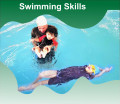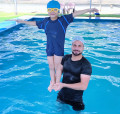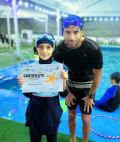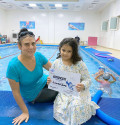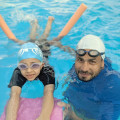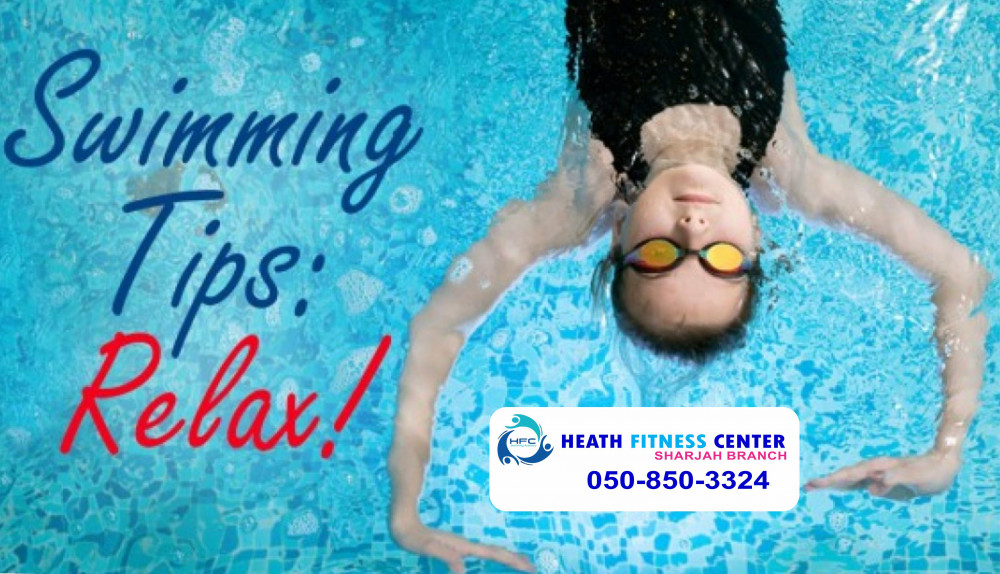
Swimming Tips: How to Relax in Backstroke
2023-10-11 - swimmingIntroduction
Swimming is a fantastic full-body workout that not only
enhances your cardiovascular fitness but also offers relaxation and stress
relief. Among the various swimming styles, backstroke stands out for its unique
way of connecting you with the water, offering a serene and tranquil
experience. In this article, we will explore essential tips on how to relax
while practicing backstroke swimming.
The Basics of
Backstroke Swimming
Before we dive into relaxation techniques, let's briefly
cover the fundamental aspects of backstroke swimming.
Body Position
Maintaining the right body position is crucial for a smooth
backstroke. Float on your back with your body parallel to the water's surface.
Ensure that your head remains above water for breathing.
Hand Movement
In backstroke, your arms perform a continuous windmill-like
motion. Your hands should enter the water pinky-first and exit thumb-first.
This movement helps propel you forward.
Leg Movement
The leg movement in backstroke involves a flutter kick. Keep
your legs straight and close together while making small, rhythmic kicks.
Breathing Techniques
Backstroke allows for easy and regular breathing since your
face remains out of the water. Breathe in through your mouth and exhale through
your nose and mouth simultaneously.
Tips for Relaxing in Backstroke Swimming
Now, let's explore how to make your backstroke experience
even more relaxing.
Find Your Rhythm
Backstroke is all about finding your rhythm. Focus on the
continuous movement of your arms and legs. The repetitive nature of this stroke
can be meditative and soothing.
Focus on Relaxation
While backstroke is a competitive swimming style, you can
make it a relaxing experience by focusing on your relaxation techniques.
Picture yourself floating on a calm, peaceful lake, and let your body follow
suit.
Avoid Overexertion
One of the keys to relaxation in backstroke is avoiding
overexertion. Keep a steady pace, and don't push yourself too hard. Remember,
it's about enjoying the water, not racing it.
Stay Calm in Open
Water
Swimming in open water can be both exhilarating and
daunting. To relax in open water while backstroking, keep your head up,
maintain a sense of direction, and trust your technique.
Common Mistakes to
Avoid
To truly enjoy backstroke swimming, it's essential to steer
clear of common mistakes.
Poor Body Alignment
Maintaining the right body position is crucial. Poor
alignment can lead to drag and discomfort.
Irregular Breathing
Inconsistent breathing can disrupt your rhythm. Practice your
breathing technique to avoid discomfort and anxiety.
Over kicking
Excessive kicking can lead to fatigue. Keep your kicks small
and controlled to conserve energy.
Panic in Open Water
It's natural to feel a bit nervous in open water, but panic
can hinder relaxation. Stay calm, and remember that you are in control.
The Benefits of
Backstroke Swimming
Relaxation aside, backstroke swimming offers several
benefits. It improves posture, strengthens core muscles, and helps alleviate
back pain. Regular backstroke practice can boost your overall swimming skills
and add variety to your workouts.
Conclusion
In conclusion, backstroke swimming is not just a fantastic
way to stay fit, but it can also be incredibly relaxing when done right. By
following these tips and avoiding common mistakes, you can make backstroke
swimming a serene and peaceful experience that allows you to connect with the
water.







.jpg)




































































